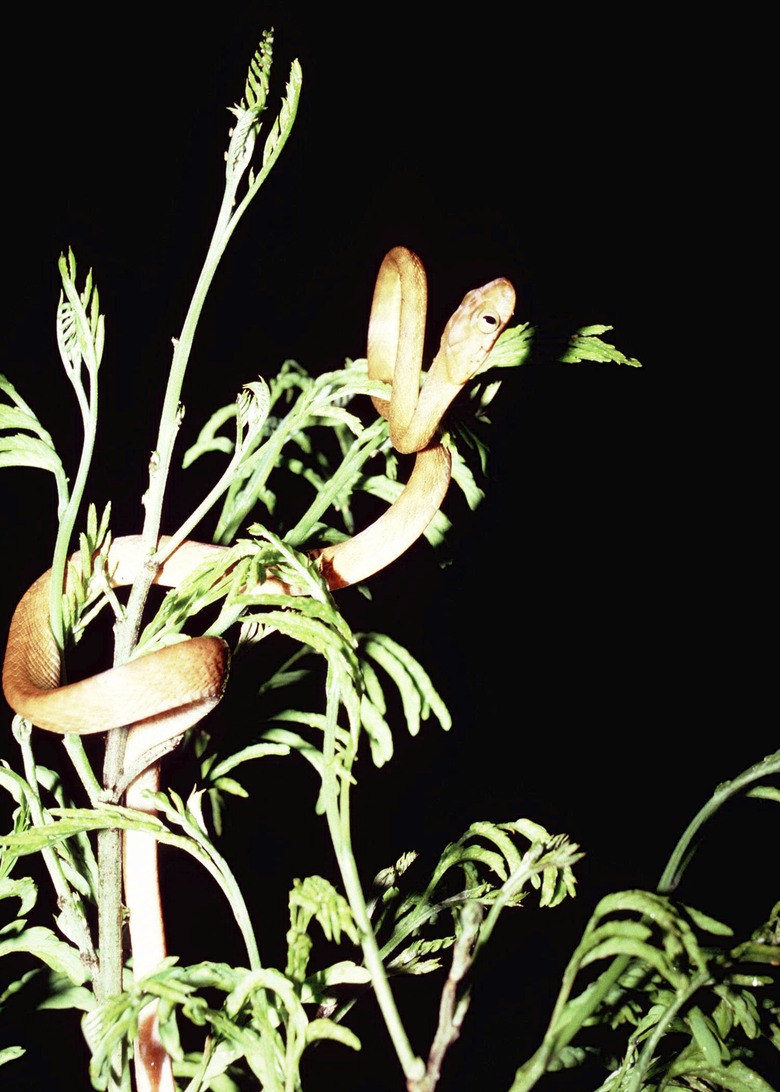Examples Of Organisms Endangered Due To Invasive Species
Invasive species are organisms that don't live naturally in an ecosystem – they're introduced by some external factor, usually human intervention. When an invasive species threatens a local population through competition for resources or through direct predation, the results for the locals can be devastating. There have been many examples of native species endangered by invasive species, often with cascading consequences for the ecosystem at large. According to the National Wildlife Federation, 42% of all endangered species are threatened primarily due to an invasive species.
Invasive Species vs. Native Species
Invasive Species vs. Native Species
An invasive species is an organism that is introduced into an ecosystem that it did not originate from. Often, the introduced organism flourishes in this unfamiliar environment, since there are few threats, if any, to its growth and propagation. An invader can be a mammal, an insect, a plant or even a microbe like bacteria. Once an invasive species begins eliminating local species, controlling the growth of the invasive organism and the subjugation of the local populations can be difficult or impossible.
Guam and the Brown Tree Snake
Guam and the Brown Tree Snake
One case of an invasive species endangering local populations on a large scale occurred on the island of Guam, which saw an invasion of the brown tree snake in the 1950s. The snake was likely a stowaway from Papua New Guinea, and it quickly rose to dominance as the only large snake on the island. Before the brown tree snake's arrival, the only native snake was a small blind wormlike creature.
By 1968, the tree snake population had expanded to every part of the island, threatening local populations of birds and mammals. By the time the United States Fish and Wildlife Service surveyed the island in 1984, populations of rodents and birds were all virtually extinct, and to this day these populations are significantly rarer than in other forest environments. The tree snake population, meanwhile, retains a species density of over 13,000 per square mile.
Zebra Mussels in the United States
Zebra Mussels in the United States
Invasive species often choke multiple native species out of an environment simultaneously. The zebra mussel, a native of the Balkans, Poland and Russia, hitched a ride to the United States in the ballast water of a cargo ship and muscled out the local populations of mollusks from the Great Lakes region. These mussels can produce up to one million eggs in a season, 2% of which will reach adulthood. This incredible growth rate becomes a problem when the mussels clog water intake pipes and otherwise damage man-made structures. They also coat indigenous organisms like clams to such an extent that they prohibit the clam from feeding. Other organisms like turtles and crayfish are also susceptible to having their movement, reproduction, respiration or food supply threatened by the invasive zebra mussel. Once zebra mussels establish themselves, they are impossible to eradicate, and they can cost industrial facilities millions of dollars per year in efforts to control them.
The American Chestnut
The American Chestnut
An invasive fungus or pathogen can be just as threatening as a more complex organism. The American chestnut, a towering hardwood tree that once populated 200 million acres of the eastern United States with a population of around four billion individual trees, was devastated by a fungus known as the chestnut blight.
This fungus originated from an Asian cousin of the American chestnut, the Chinese chestnut, imported to the United States in the late 1890s. It only took a few decades for the blight to girdle almost every single living American chestnut, effectively eliminating the tree from the United States. The species persists, since the root system survives the blight, but an adult tree cannot grow. This makes the native chestnut species "effectively extinct" once the current generation dies off, since no new seeds can be produced.
Cite This Article
MLA
Dilthey, Max Roman. "Examples Of Organisms Endangered Due To Invasive Species" sciencing.com, https://www.sciencing.com/examples-organisms-endangered-due-invasive-species-18813/. 30 September 2021.
APA
Dilthey, Max Roman. (2021, September 30). Examples Of Organisms Endangered Due To Invasive Species. sciencing.com. Retrieved from https://www.sciencing.com/examples-organisms-endangered-due-invasive-species-18813/
Chicago
Dilthey, Max Roman. Examples Of Organisms Endangered Due To Invasive Species last modified March 24, 2022. https://www.sciencing.com/examples-organisms-endangered-due-invasive-species-18813/
